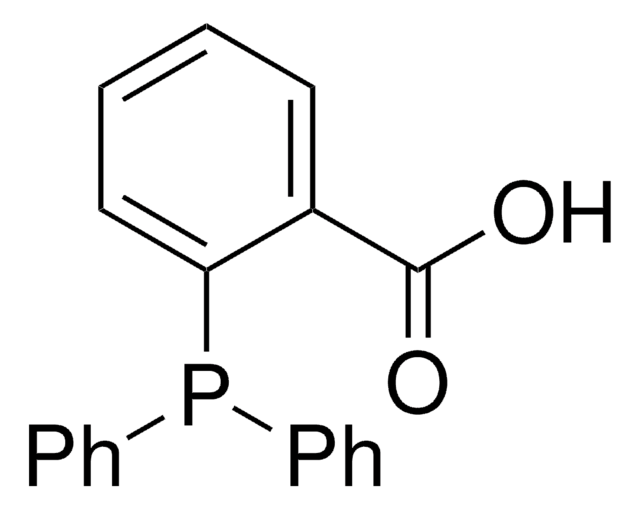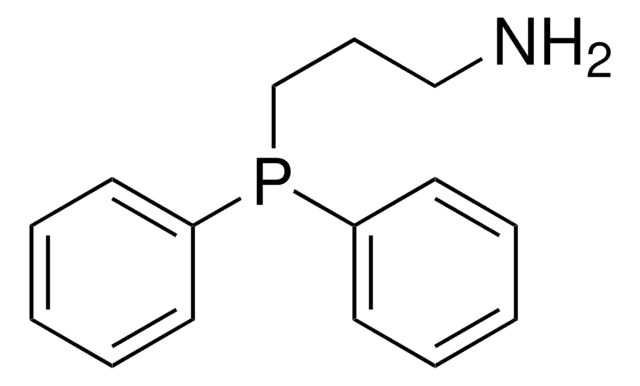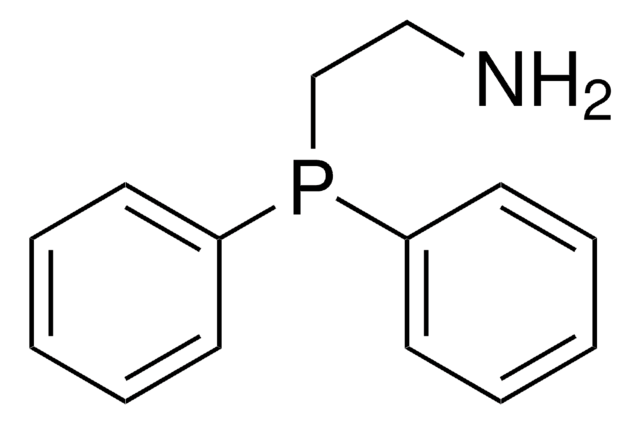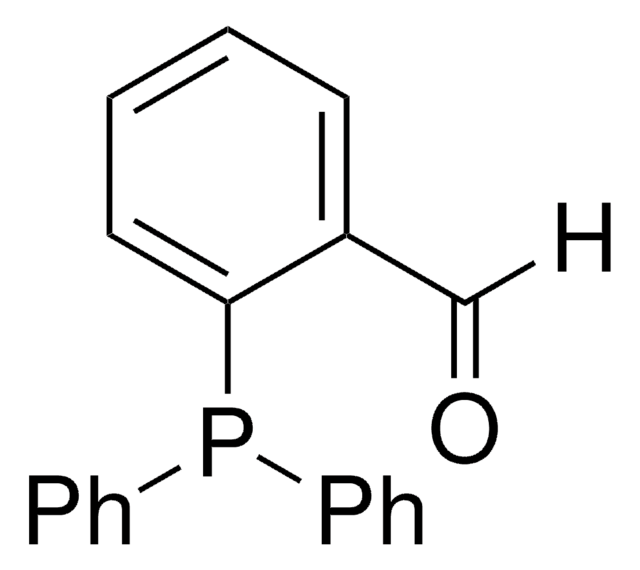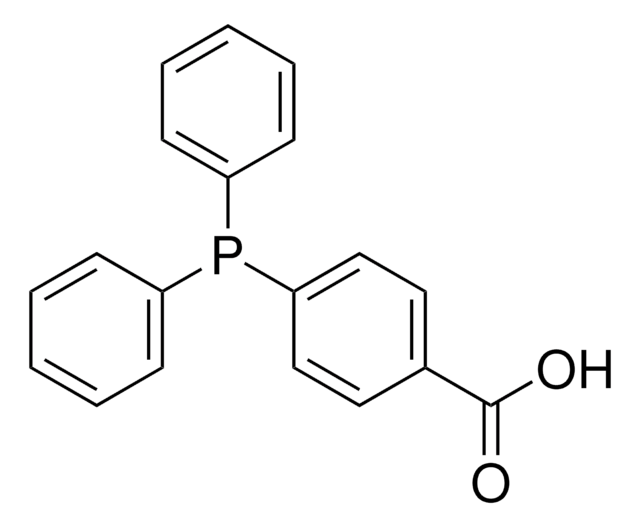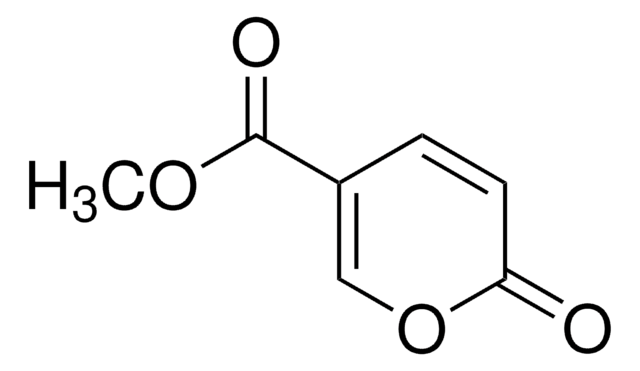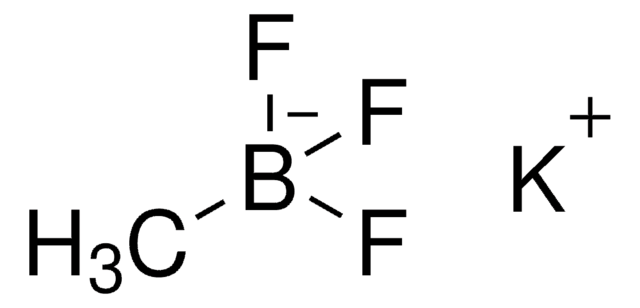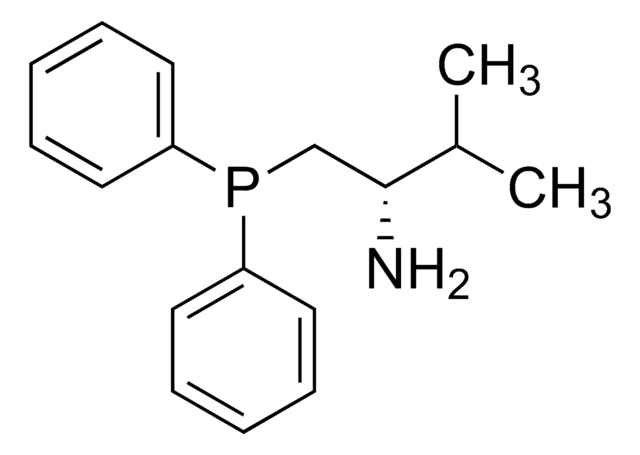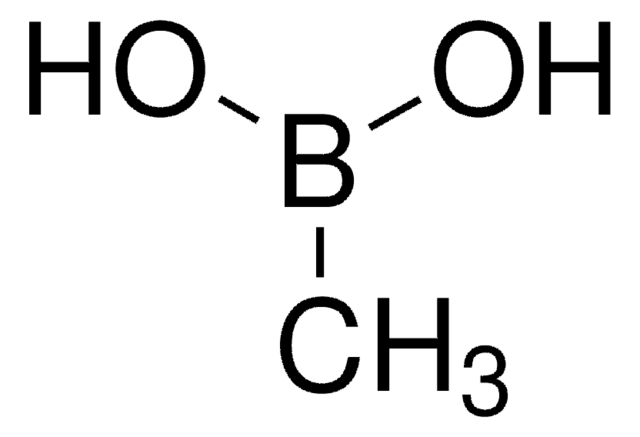715034
3-(Diphenylphosphino)propionic acid
97%
Synonym(s):
(2-Carboxyethyl)diphenylphosphine, 4,4-Diphenyl-4-phosphabutanoic acid
About This Item
Recommended Products
Quality Level
Assay
97%
form
solid
reaction suitability
reaction type: Buchwald-Hartwig Cross Coupling Reaction
reaction type: Heck Reaction
reaction type: Hiyama Coupling
reaction type: Negishi Coupling
reaction type: Sonogashira Coupling
reaction type: Stille Coupling
reaction type: Suzuki-Miyaura Coupling
reagent type: ligand
mp
130-134 °C
functional group
phosphine
SMILES string
OC(=O)CCP(c1ccccc1)c2ccccc2
InChI
1S/C15H15O2P/c16-15(17)11-12-18(13-7-3-1-4-8-13)14-9-5-2-6-10-14/h1-10H,11-12H2,(H,16,17)
InChI key
OTSIFUHGOBFOTH-UHFFFAOYSA-N
Application
- Organocatalytic asymmetric aziridination of imines and diazo compounds
- Phosphine-mediated conversion of azides into diazo compounds
- Preparation of rhodium catalysts for hydroformylation
- Synthesis of reagents for the Mitsunobu reaction
Signal Word
Warning
Hazard Statements
Precautionary Statements
Hazard Classifications
Eye Irrit. 2 - Skin Irrit. 2 - STOT SE 3
Target Organs
Respiratory system
Storage Class Code
11 - Combustible Solids
WGK
WGK 3
Flash Point(F)
Not applicable
Flash Point(C)
Not applicable
Choose from one of the most recent versions:
Already Own This Product?
Find documentation for the products that you have recently purchased in the Document Library.
Our team of scientists has experience in all areas of research including Life Science, Material Science, Chemical Synthesis, Chromatography, Analytical and many others.
Contact Technical Service